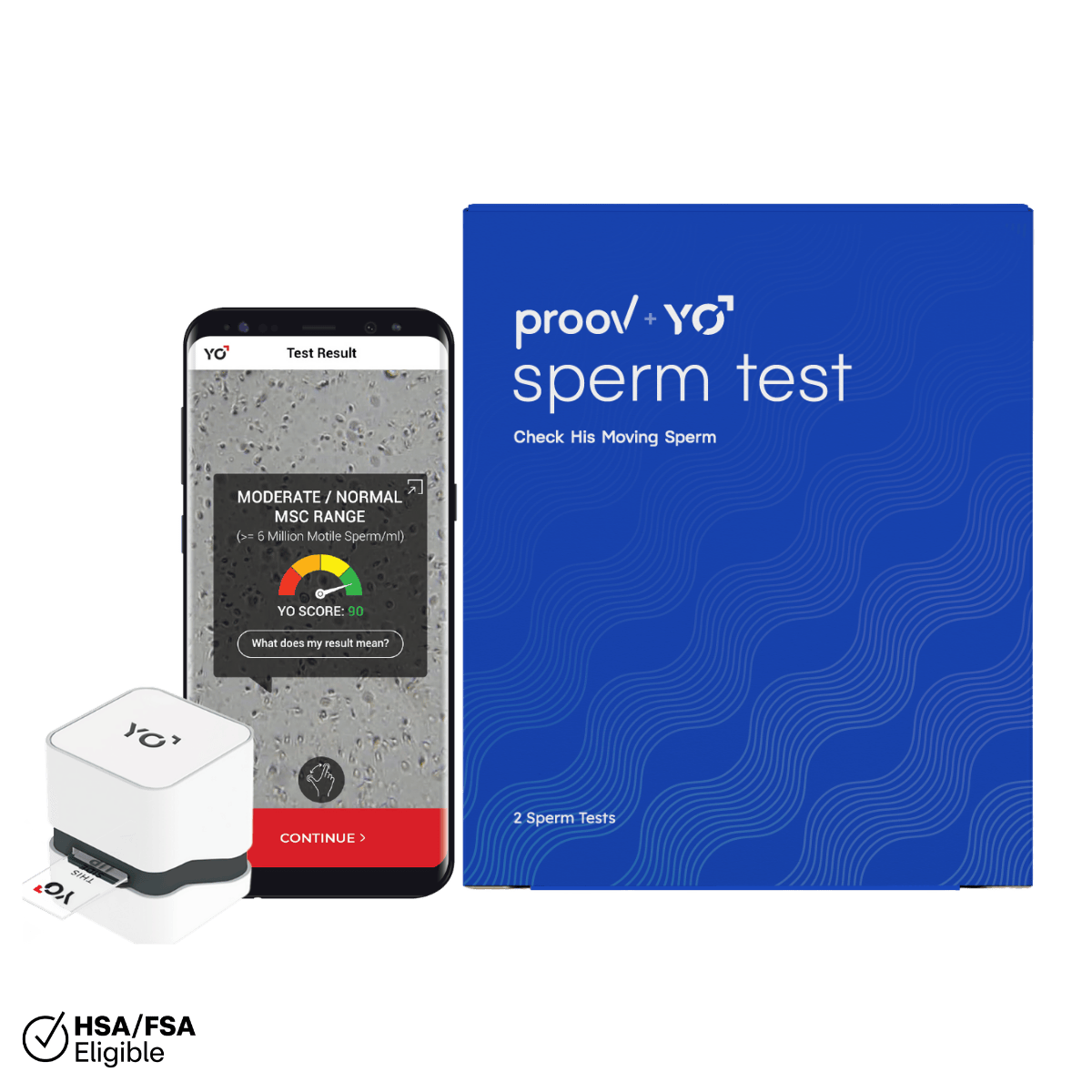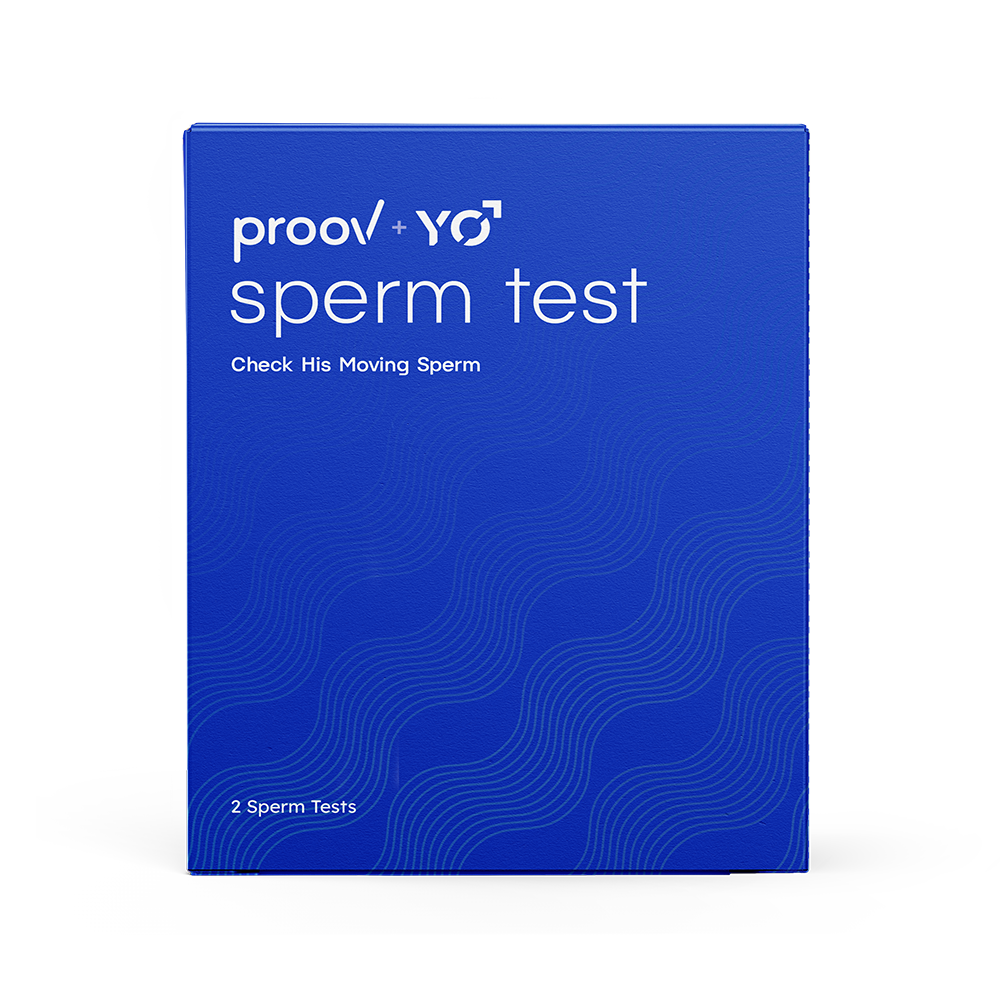Written on 8/5/21
Updated on 8/12/22
After a cycle of Proov PdG testing, you now have powerful information about the success of your ovulation to help you determine what’s next.
If you’re just finishing up a cycle of Proov PdG testing, congratulations! You now have powerful information about the success of your ovulation to help you move forward and determine what’s next.
At this point you may be thinking, “That’s great and all, but what do I do next?”
We’re so glad you asked! While the free Proov Insight app gives you personalized tips based on your results and goals (if you haven’t downloaded it yet, you should!), keep reading to learn more about the best next steps based on your Proov Confirm results.
Proov PdG Outcome #1: Successful Ovulation

The above chart shows Proov PdG patterns for a successful ovulation.
As the above chart shows, you’ve experienced a successful ovulation if 3-4 of your Proov PdG tests during the 7-10 days past peak fertility testing window are positive (with a positive result on 10 DPP). In this case, your post-ovulation PdG levels look good and a problem with ovulation is likely not preventing you from conceiving. In the Proov Insight app, your Ovulation Score will be between 90 and 100.
Next steps
After the 7-10 DPP window, the next step is to test for pregnancy! Most home pregnancy tests don’t recommend testing for pregnancy until the day after a missed period, although some tests claim to be able to detect pregnancy earlier than that. We recommend following the instructions of the specific pregnancy test you have.
If you get a positive pregnancy test, HUGE congrats! We could not be happier for you and would love to hear your story.
However, if you do get a negative pregnancy test, there are plenty of next steps you can take. Even though problems with ovulation may not be preventing you from conceiving, we recommend consulting your doctor as there are other factors you can look into.
FSH testing can give you insight into your ovarian reserve. FSH is the hormone that signals to your ovaries at the beginning of your cycle that it’s time to produce an egg for ovulation.
If you have a diminished ovarian reserve, more FSH will be required to stimulate your ovaries to produce eggs. Thus, elevated FSH levels can signal diminished ovarian reserve, which can impact your chances at conception. Proov FSH tests are a great at-home option for getting insight into your FSH levels.
You can also look into the TUSHY method, which was created by our medical advisor, Dr. Aimee Eyvazzadeh. The TUSHY method stands for tubes, uterus, sperm, your hormones, and genetics.
Checking each of these components early in your TTC journey can help you get the full picture of your fertility status. It can also help you identify specific problems that may be preventing you from conceiving.
Proov PdG Outcome #2: Problem with Ovulation

The above chart shows some Proov PdG patterns for a problem with ovulation.
With this Proov PdG outcome, you might not be producing quite enough PdG during the 7-10 DPP testing window in order for ovulation to be truly successful. While the above chart shows some iterations of problems with ovulation, there are many and your specific pattern may not be represented above. In the Proov Insight app, your Ovulation Score will be anywhere from 21 to 89.
In general, ovulation is considered weak if you get less than 3 positive PdG tests or if you do not get a positive result on 10 DPP. This typically indicates that you aren’t producing enough PdG or your levels are dropping just a tad too early. Some doctors refer to weak ovulation as low progesterone or luteal phase defect — they all mean the same thing!
Even if you never get a positive PdG test, as long as your 7-10 DPP tests are significantly lighter than your baseline test (indicating a rise in PdG) we can say that you’ve ovulated. But again, you might not be producing sufficient PdG for long enough.
Next steps
In the case of a problem with ovulation, it is still possible to conceive since an egg was released. However, low progesterone levels have been shown to lead to early miscarriage. We do recommend following up with your doctor if this scenario applies to you. Sometimes, PdG levels will rise during pregnancy and all is good! But other times it’s important to have help from a doctor, which is why we always think it’s a good idea to double check.
If you do not conceive this cycle, not to worry: there are plenty of ways to improve your PdG levels! Here are a few of our favorites:
- Diet changes: While foods do not directly contain PdG, some have been shown to support your body’s natural PdG production. This list includes kale, spinach, nuts, pumpkin, beans, and broccoli, among others.
- Seed cycling: Seed cycling is a natural way to promote a hormone balance through (you guessed it!) eating seeds. You’ll eat pumpkin and flax seeds during the first half of your cycle to promote estrogen, and sesame and sunflower seeds during the second half of your cycle to promote progesterone.
- Herbal supplements: Some herbals, such as maca, ashwagandha, and vitex (chase tree berry), have been shown to improve progesterone levels.
-
Prescription progesterone supplements: You’ll need to see your doctor to get a prescription-strength progesterone supplement. This is typically the quickest and most effective way to improve your progesterone levels.
Unsure of where to start? We have a partnership with a virtual fertility clinic, Fertility Cloud, where a board-certified reproductive endocrinologist will take a look at your Proov PdG results and help you determine the best next steps based on your individual needs. If necessary, the doctors at Fertility Cloud can prescribe progesterone supplements or ovulation-inducing medications.
Finally the most important next step after making any changes to your regimen is to test again next cycle to see if they’re working! If your Proov PdG results don’t improve from cycle-to-cycle, even after making some changes, we recommend consulting your doctor.
Proov PdG Outcome #3: No Ovulation

The above chart shows Proov PdG patterns when ovulation does not occur.
In the event of no ovulation, an egg is not released and there is no PdG production. Since progesterone is produced by the empty follicle after an egg is released, a lack of ovulation means there is no empty follicle to produce progesterone, and therefore it cannot be metabolized into PdG. In the Proov Insight app, your Ovulation Score will be 20 or below.
When this happens, we typically won’t see any change between your baseline and your 7-10 DPP tests. They’ll all be about the same intensity, indicating no increase in PdG levels.
Next steps:
If you do not ovulate, conception is not possible meaning you also likely will not get a positive pregnancy test. Luckily, this is great information to bring to your doctor or a Fertility Cloud consultation to help you move forward. They may even be able to prescribe ovulation-inducing medications or a trigger shot.
Hopefully you now have a good idea of how you can move forward based on your unique Proov PdG results. For more individualized suggestions, we recommend using the free Proov Insight app.
Have additional questions about your results or next steps? Feel free to reach out to us at info@proovtest.com.












